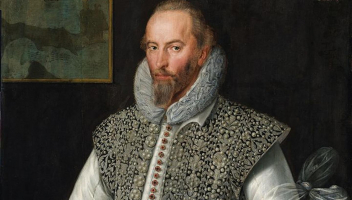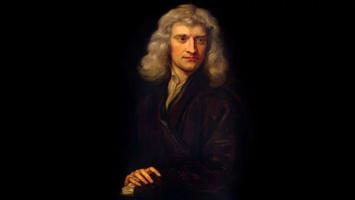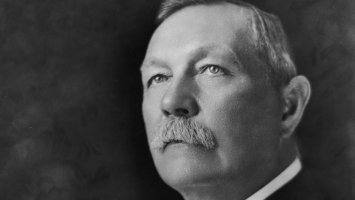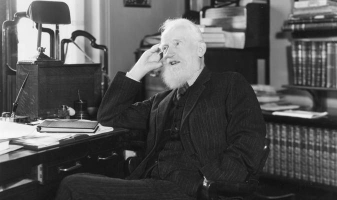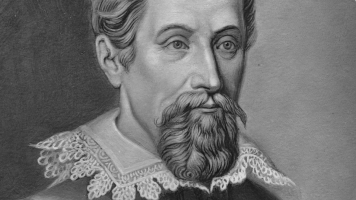Top 7 Interesting Facts about Sir Francis Drake
The most infamous marine in Elizabethan England was Sir Francis Drake. Drake rapidly attracted the attention of Queen Elizabeth I after directing two ... read more...successful excursions to the West Indies, and he went on to become the first Englishman to complete the journey. Drake guided England to new, far-off coasts while plundering, robbing, and enslaving people in the service of his nation as the Queen's privateer. In fact, "privateer" is frequently used in place of the word "pirate." Here are the 7 Interesting Facts about Sir Francis Drake, a man who was adored by his queen and despised by his foes.
-
English explorer, ship captain, privateer, naval officer, and politician Sir Francis Drake served in several capacities. Drake is most known for his journey that traveled around the globe between 1577 and 1580. This also applied to his passage into the Pacific Ocean before it became a restricted area of the West. Spain and his claim to the region in what is now the US state of California known as New Albion for England. His exploration of the west coast of the Americas, which had hitherto been mostly uncharted by Western navigation, ushered in a period of strife with the Spaniards.
Although he is a famous character, one of the 7 Interesting Facts that surely many readers do not know is his birthday.
Drake's exact date of birth is unknown. One of Francis Drake's few known facts about himself is that he was born at Crowndale Farm, Devon, in southwest England, between 1535 and 1540. Inferred from two portraits: one is a painted miniature of Nicholas Hilliard in 1581 when he is claimed to be 42 years old and another in 1594 when he is reported to be 53 years old, Drake's precise birthdate is uncertain and might have been as early as 1535 or as late as 1540.
He was the eleventh child of Edmund Drake, a tenant farmer employed by Lord Francis Russell, Earl of Bedford, on his estate. Young Francis was reared by relatives who were merchants and privateers in Plymouth since his father, who was accused of assault and theft in Devon in 1548, had fled the area.
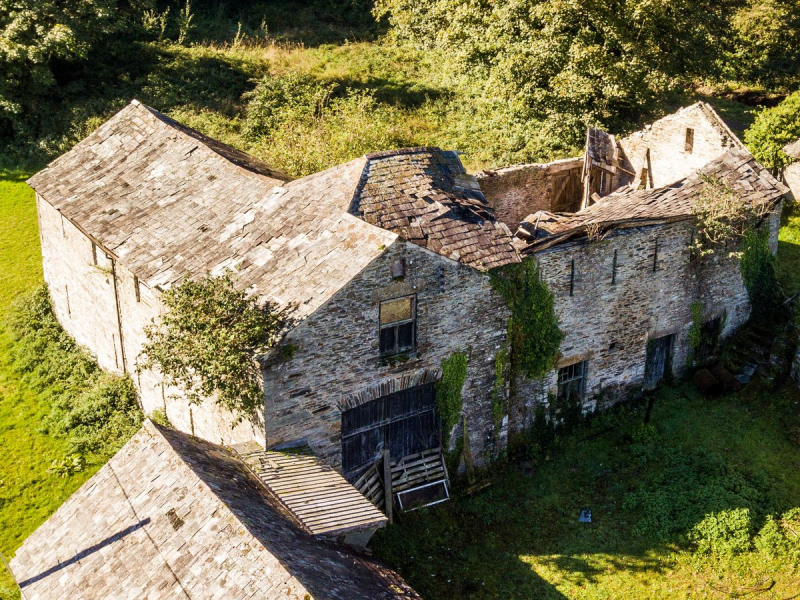
Sir Francis Drake's birthplace is now a crumbling ruin - Photo: plymouthherald.co.uk Tavistock - Sir Francis Drake's birthplace - Video: milee -
Francis Drake was presumably born without parents, which is probably why William Hawkins of Plymouth took him in when he was a young child. During his apprenticeship on Hawkin's boats, Drake gained his first seagoing instruction.
They mostly transported manufactured commodities and cloth, often illegally, but piracy was also an attraction. John Hawkins returned to England with priceless items from Guinea, including gold, ivory, pepper, and an idea. Although the Portuguese had a legal monopoly on the slave trade in West Africa, John Hawkins came up with a scheme to break into it and, in 1562, solicited the aid of friends and family to assist finance his venture. Drake, who traveled on Hawkins' second journey when he was 20 years old and not a member of that organization, would share in the proceeds. Scholars like Kris Lane describe Drake as one of the first British slave traders along with Hawkins as a result.After that, he traveled to West Africa with his cousin John Hawkins to kidnap men and women at the beginning of 1560. In addition, they assaulted Portuguese slave ships to take their "load" of people. As the result, millions of Africans were abducted, sold, and transported across the Atlantic throughout the many centuries of transatlantic slavery. On incredibly lucrative plantations, they were held as slaves and made to labor under abhorrent conditions. Through this commerce in people and the things they were compelled to produce, Britain and other nations became very wealthy. People who were in slavery established groups and many of them rebelled in a variety of ways.
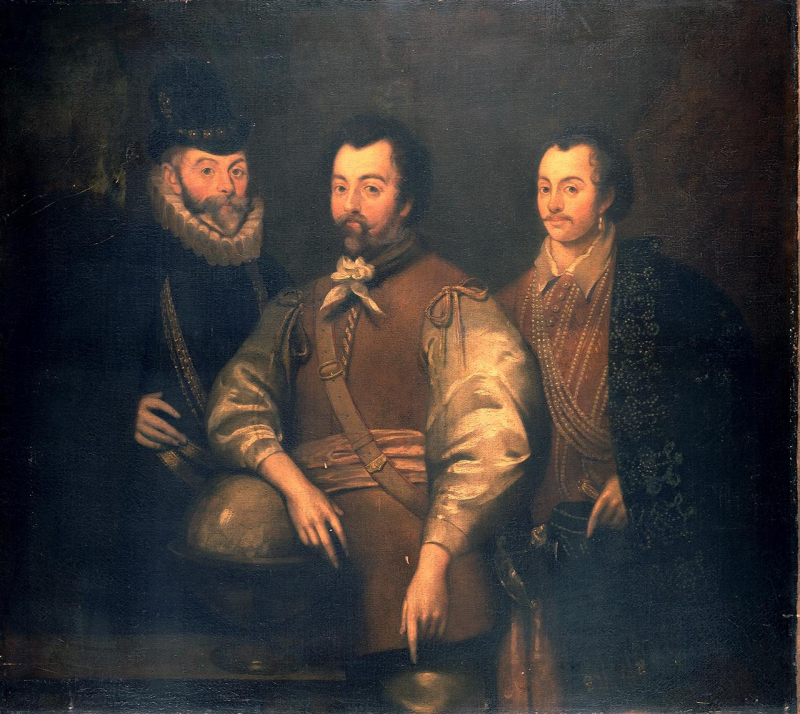
Thomas Cavendish, Sir Francis Drake and Sir John Hawkins - Photo: rmg.co.uk Queen Elizabeth's Pirates - Video: Rebecca Pattison the History Buff -
Drake is known for being the first Englishman to circumnavigate the world on a single expedition, which from 1577 to 1580 included his incursions into the Pacific Ocean until it became an exclusive territory of the Pacific Ocean. Spain and his claim of the New Albion for England is now the US state of California. His exploration of the west coast of the Americas, which had hitherto been mostly uncharted by Western navigation, ushered in a period of strife with the Spaniards.
In addition, a covert pirate campaign against the Spanish was also authorized by Queen Elizabeth during Drake's voyage to the world. Since Drake was a privateer, the crown authorized him to plunder enemy ships and cargoes. Drake was given a mission by Elizabeth to conduct an invasion of the Spanish possessions along the American Pacific coast.
Drake also became the first Englishman to view the Pacific Ocean on this journey, matching the feat of the Spaniard Vasco Nez de Balboa in 1513, by scaling a tall tree in the Isthmus of Panama's central highlands. As he approached the Pacific Ocean, Drake said, "I hope one day an Englishman will be able to sail it." Years later, as part of his voyage around the globe, he would succeed in doing just that.
Sir Francis Drake, the first Englishman to circumnavigate the world, returned to England across the Pacific in his 100-ton flagship The Pelican (later The Golden Hind). The queen knighted him as payment, transforming him into Sir Francis Drake.
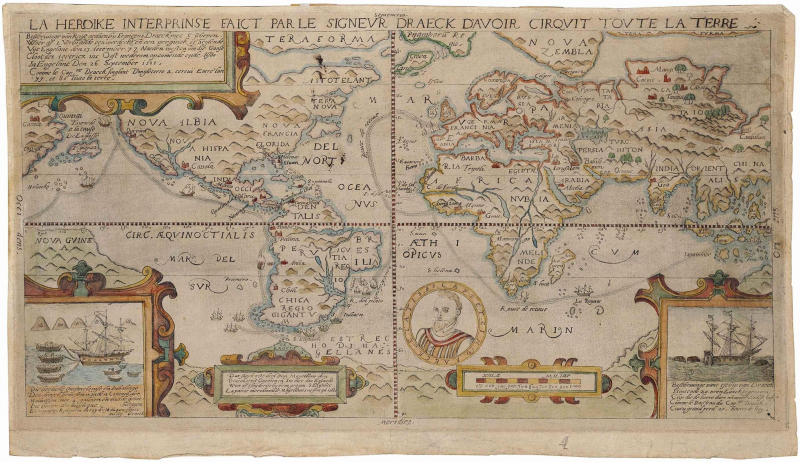
Francis Drake's circumnavigation - Photo: wikipedia.com Francis Drake Sails Around the World - Video: Epic History TV -
Drake's exploits made him a hero to the British, whereas the Spaniards considered him a pirate. And Francis Drake was hated by the Spanish with the nickname ‘El Draque’ or "Dragon". King Philip II of Spain is said to have offered to offer a reward of $20,000 equivalent to approximately £7 million (or $8 million in 2022) to anyone who can catch or kill him.
Due to the frequent attacks that Sir Francis Drake conducted on Spanish ships and communities while on his trips, the Spanish abhorred him and gave him the nickname "El Draque" or "Dragon". In particular, by commanding several assaults against Spanish treasure ships and settlements in the New World, Drake turned himself into the scourge of the Spanish from 1570 till the end of his life. In fact, Drake frequently traveled without an official privateer's commission, making many of the expeditions completely unlawful. Some Spanish seafarers were so terrified by Drake that they thought he was a witch. Drake was said to be working with the devil and to have a magic mirror that gave him access to a map of every ship in the ocean.
Why did Spannish consider Drake the villainous pirate? - Video: The Legends of History 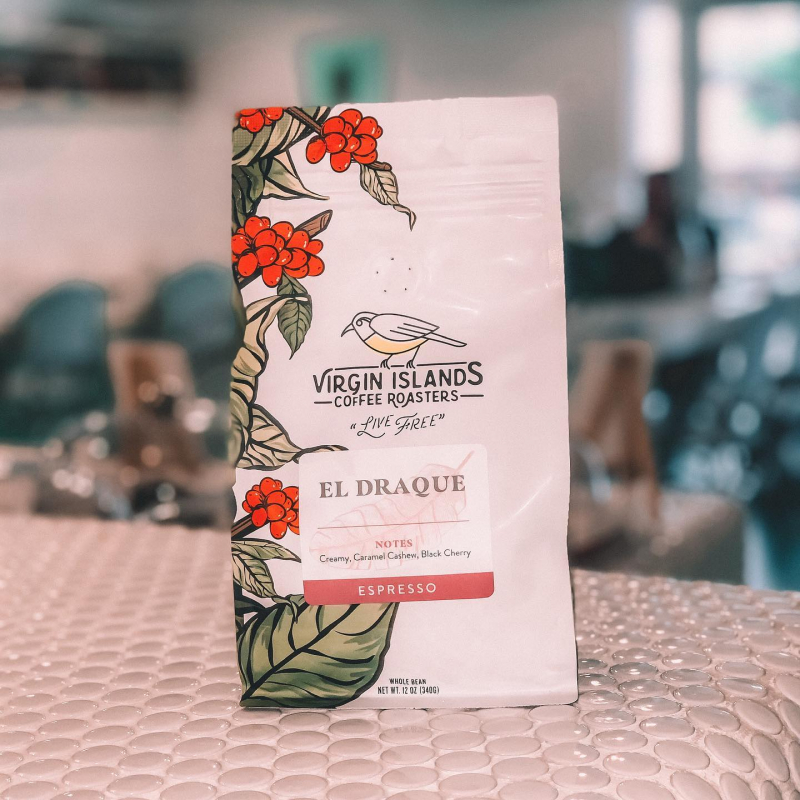
Virgin Islands Coffee Roasters takes the name El Draque to name its products - Photo: virginislandscoffeeroasters.com -
Even though Drake is most renowned for his private and military pursuits, Sir Francis Drake was an astute politician throughout his time in England. Despite having been in parliament three times, there is little proof that he was engaged in Westminster while he was overseas.
In September 1581, upon his return from a globe voyage, Drake was elected mayor of Plymouth. On January 16, 1581, he was elected to the Camelford seat during the 4th session of Elizabeth I's Parliament. He wasn't actively participating, though, and on February 17, 1581, he was given permission to take a leave of absence from some of the duties he needed to do to serve His Majesty.
After Elizabeth I established the 5th Parliament, in 1584, Drake was once more elected to represent Bossiney, one of the corrupt Cornish counties which the parliamentary constituency in Cornwall. He was involved in early American colonization, fisheries, naval affairs, and matters mostly pertaining to Devon while serving in parliament. He worked on other projects and went on a trip to Portugal throughout the course of his following two legislative sessions. In 1593, he was elected to the parliament for Plymouth. He was involved in affairs pertaining to Plymouth's interests in general during that time, but he especially placed a strong emphasis on Spanish defense.
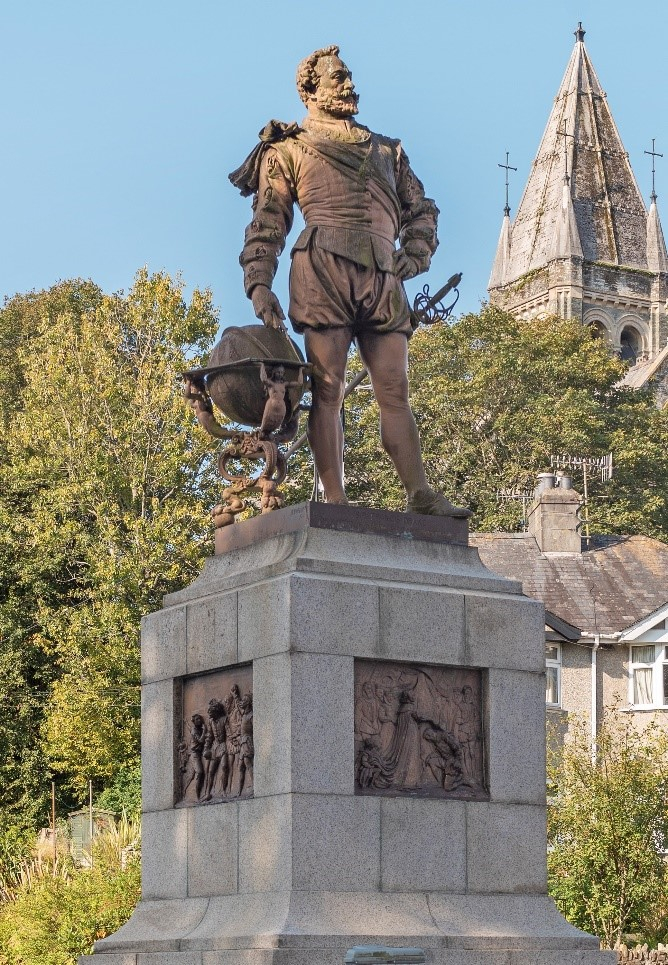
The Drake's state in Plymouth - Photo: tavistock.gov.uk Memories of Sir Francis Drake in Plymouth - Video: English4Italy.com -
Drake worked at sea until he was in his mid-fifties. After a catastrophic campaign against Spanish America, he failed to take control of the port of Las Palmas in 1595. He then attempted to take control of San Juan de Puerto Rico but was defeated at the Battle of San Juan. The following feat of Drake is a step closer to full-scale conflict between England and Spain. This was the West Indies attack in 1585–1586, which demonstrated how unprepared the Spaniards were for defense on their Atlantic shores as they were on their Pacific ones. In this attack, Drake had a cannonball fly directly through his legs but was uninjured. In particular, he was shot by Spanish gunners with a cannonball from El Morro Castle through the cabin of the flagship Drake in the harbor battle at Palma about Drake's raid into Cartagena de Indias, West Indies, and fortunately, he survived.
However, Drake failed in his effort to launch a ground invasion to seize the lucrative port of Panama. A few weeks later, on January 28, 1596, when anchored off the coast of Portobelo, where other Spanish treasure ships sought safety, he passed away (at the age of roughly 56) from dysentery, a condition prevalent in the tropics at the time. The British fleet's withdrawal was stopped after his death.
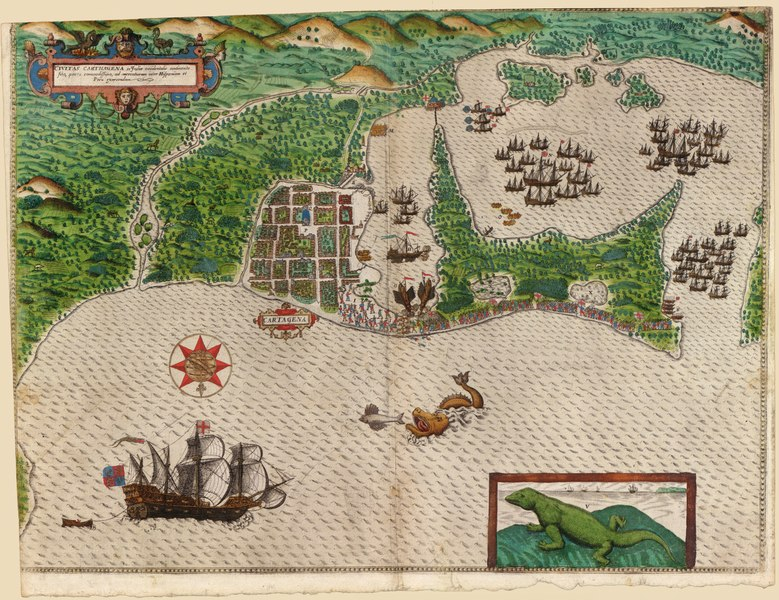
Sir Francis Drake’s Attack on Cartagena de Indias - Photo: cartagenaexplorer.com 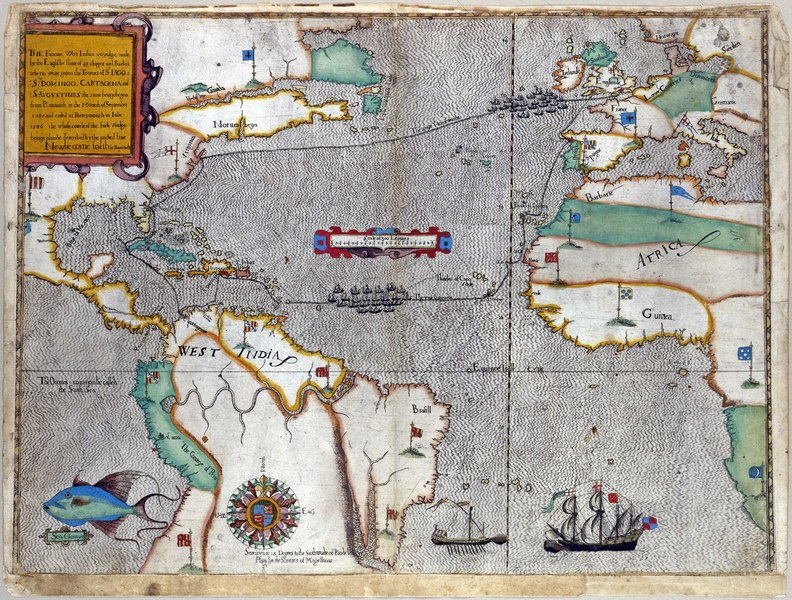
The route of the entire Great Expedition, including Drake’s raid on Cartagena - Photo: cartagenaexplorer.com -
At the age of fifty, Drake continued to work on his own, until 1595 he set out to raid again, attacking Panama and Puerto Rico.
On January 28, 1596, Drake passed away from dysentery. He requested to be completely armored before passing away. He was interred close to Portobelo in a sealed, lead-lined coffin. He requested to be completely armored before passing away. Drake was buried at sea, a few miles off the coast of Portobelo in a sealed, lead-lined coffin. Without success, several attempts have been made to locate his casket. Many explorers have made many attempts to find his coffin but were still unsuccessful.
His ultimate resting site is said to be close to the Elizabeth and Delight, two British ships that sunk in Portobelo Bay. To this day, many historians, divers, and treasure hunters are still making the effort to look for Francis Drake's coffin but have yet to yield any worthwhile results.
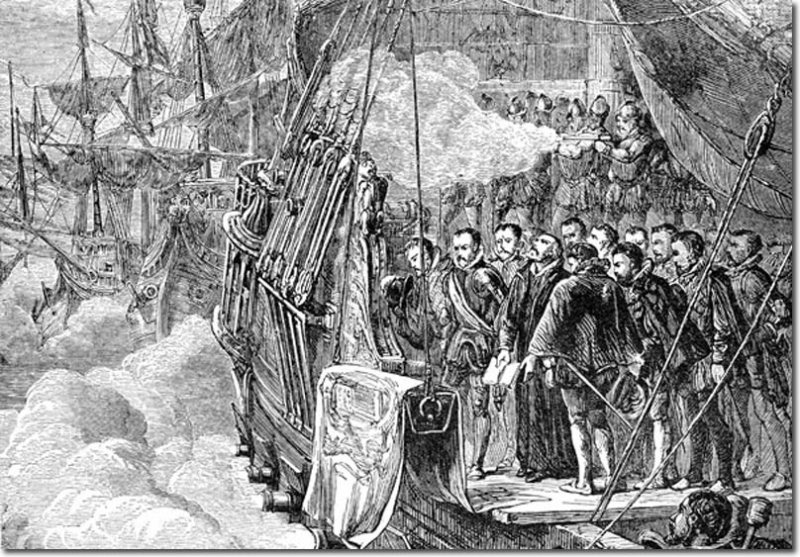
Drake's burial at sea off Portobello, Panama - Photo: alamy.com 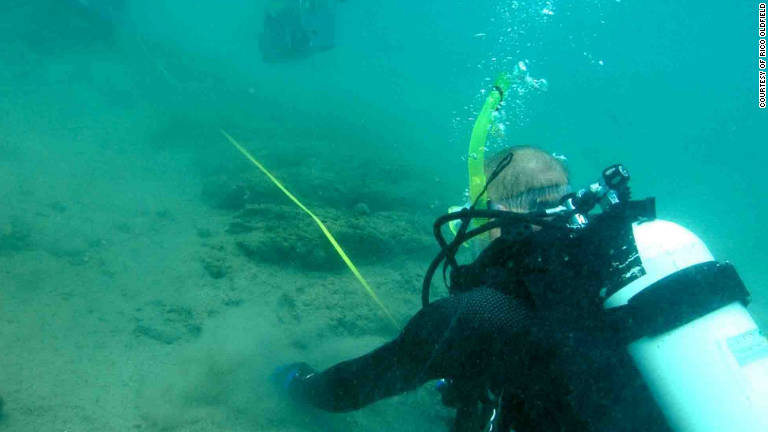
Voyage to bottom of the sea for Sir Francis Drake's remains - Photo: edition.cnn.com









